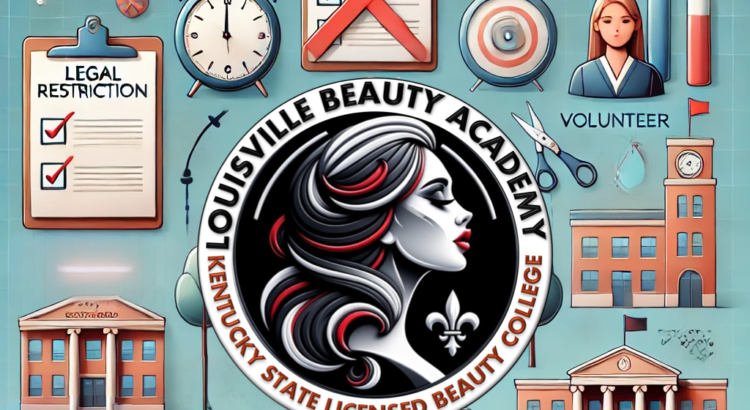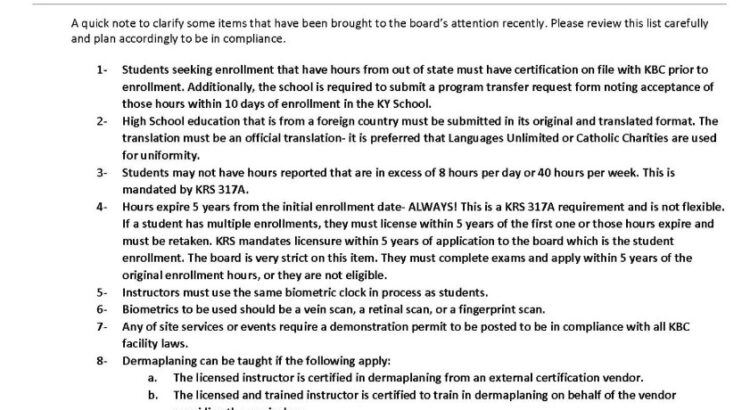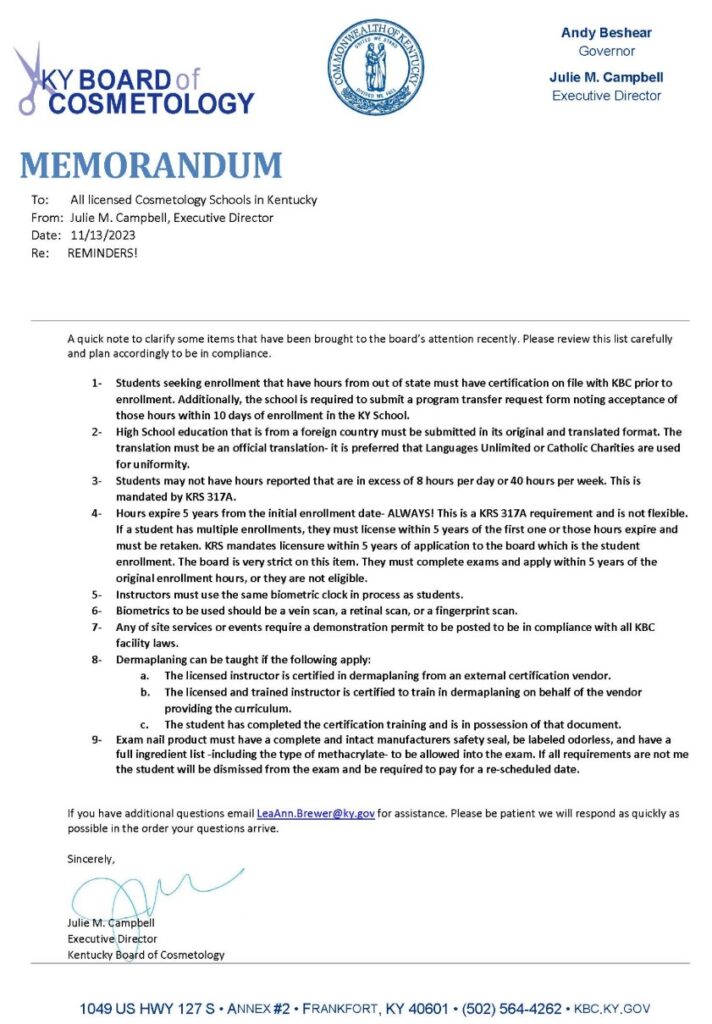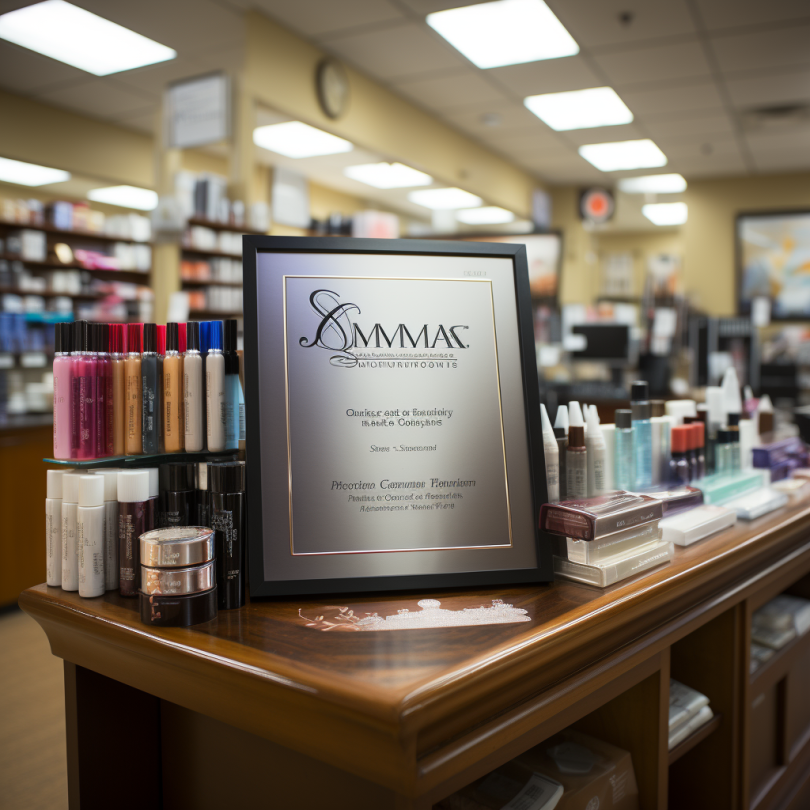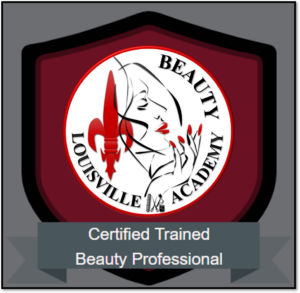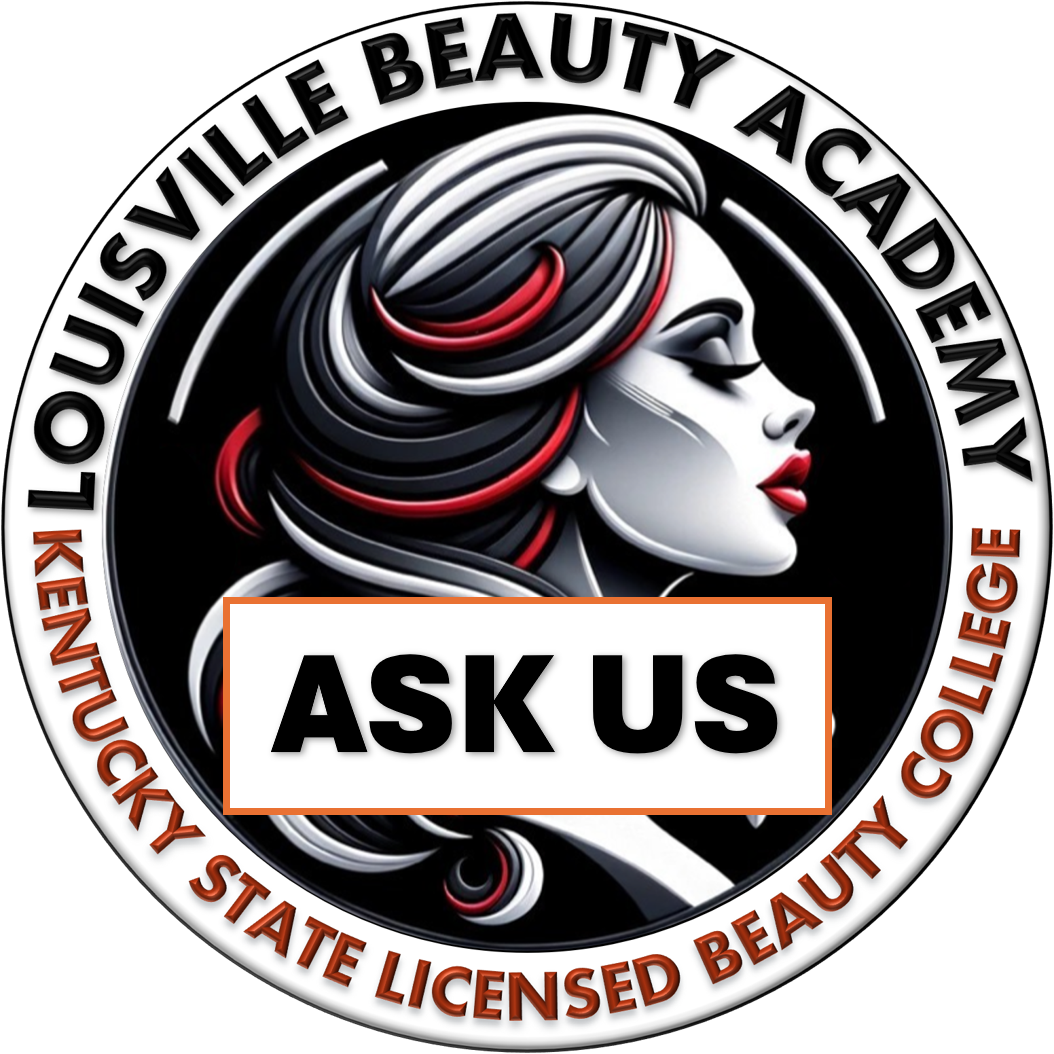Legal Answer: No, This Is Not Permitted.
According to Kentucky state law and Kentucky Board of Cosmetology (KBC) regulations, each school location operates as an independent licensed facility with its own school license number and separate compliance requirements. Even if multiple locations are owned by the same entity (such as Louisville Beauty Academy LLC), they are considered legally distinct schools.
Legal Reasons Why Students Cannot Attend Multiple Locations:
- Each School Has Its Own State License & Inspections
- Every facility is licensed and inspected individually under KBC.
- Enrolled students are legally bound to the specific school location where they have registered.
- Students cannot transfer between locations at their convenience unless they officially unenroll from one and re-enroll at another, following proper procedures.
- Clock Hours Must Be Logged Under One School License
- KY state law mandates that all student training hours be recorded under one specific school license number.
- If a student were to attend multiple locations, it would create compliance issues in tracking hours and risk regulatory violations.
- Schools must maintain accurate attendance records that align with their licensing agreements.
- KBC Compliance: Training Can Only Occur at the Enrolled Location
- All practical and theoretical training must take place only at the licensed school where the student is officially enrolled.
- Attending another branch or location without following proper re-enrollment procedures is not legally permitted under KBC guidelines.
What If a Student Wants to Move to Another Location?
- If a student wishes to attend a different location, they must:
- Officially withdraw from their current school location.
- Re-enroll at the new location under that school’s license.
- Hours completed at the original location may not always transfer and will be subject to school and state board policies.
What About Volunteer Work at Another Location?
- If a student chooses not to accumulate hours for a volunteer activity, they may perform services at another licensed school location only if supervised by an instructor at that location.
- However, this does not count as training or education and must comply with KBC’s rules regarding student work under supervision.
Final Legal Clarification:
KY state law prohibits students from training at multiple locations under a single enrollment. Students must train only at their enrolled school location and cannot freely move between branches. This rule ensures proper compliance, accurate hour tracking, and adherence to state regulations. Any deviation from this could result in non-compliance with state cosmetology laws, potentially affecting a student’s ability to obtain licensure.
For complete details on all statutes and regulations regarding beauty school enrollment, licensing, and compliance in Kentucky, please contact the Kentucky Board of Cosmetology (KBC) at KBC@ky.gov.
